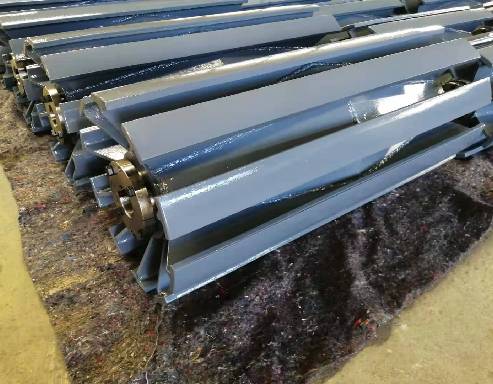 Afrikaans
Afrikaans  Albanian
Albanian  Amharic
Amharic  Arabic
Arabic  Armenian
Armenian  Azerbaijani
Azerbaijani  Basque
Basque  Belarusian
Belarusian  Bengali
Bengali  Bosnian
Bosnian  Bulgarian
Bulgarian  Catalan
Catalan  Cebuano
Cebuano  Corsican
Corsican  Croatian
Croatian  Czech
Czech  Danish
Danish  Dutch
Dutch  English
English  Esperanto
Esperanto  Estonian
Estonian  Finnish
Finnish  French
French  Frisian
Frisian  Galician
Galician  Georgian
Georgian  German
German  Greek
Greek  Gujarati
Gujarati  Haitian Creole
Haitian Creole  hausa
hausa  hawaiian
hawaiian  Hebrew
Hebrew  Hindi
Hindi  Miao
Miao  Hungarian
Hungarian  Icelandic
Icelandic  igbo
igbo  Indonesian
Indonesian  irish
irish  Italian
Italian  Japanese
Japanese  Javanese
Javanese  Kannada
Kannada  kazakh
kazakh  Khmer
Khmer  Rwandese
Rwandese  Korean
Korean  Kurdish
Kurdish  Kyrgyz
Kyrgyz  Lao
Lao  Latin
Latin  Latvian
Latvian  Lithuanian
Lithuanian  Luxembourgish
Luxembourgish  Macedonian
Macedonian  Malgashi
Malgashi  Malay
Malay  Malayalam
Malayalam  Maltese
Maltese  Maori
Maori  Marathi
Marathi  Mongolian
Mongolian  Myanmar
Myanmar  Nepali
Nepali  Norwegian
Norwegian  Norwegian
Norwegian  Occitan
Occitan  Pashto
Pashto  Persian
Persian  Polish
Polish  Portuguese
Portuguese  Punjabi
Punjabi  Romanian
Romanian  Russian
Russian  Samoan
Samoan  Scottish Gaelic
Scottish Gaelic  Serbian
Serbian  Sesotho
Sesotho  Shona
Shona  Sindhi
Sindhi  Sinhala
Sinhala  Slovak
Slovak  Slovenian
Slovenian  Somali
Somali  Spanish
Spanish  Sundanese
Sundanese  Swahili
Swahili  Swedish
Swedish  Tagalog
Tagalog  Tajik
Tajik  Tamil
Tamil  Tatar
Tatar  Telugu
Telugu  Thai
Thai  Turkish
Turkish  Turkmen
Turkmen  Ukrainian
Ukrainian  Urdu
Urdu  Uighur
Uighur  Uzbek
Uzbek  Vietnamese
Vietnamese  Welsh
Welsh  Bantu
Bantu  Yiddish
Yiddish  Yoruba
Yoruba  Zulu
Zulu primary conveyor belt cleaners
Primary Conveyor Belt Cleaners Ensuring Efficiency and Safety in Material Handling
In various industries, conveyor belts are pivotal to the streamlined transport of materials, from mining to manufacturing. However, the efficiency of these systems heavily relies on proper maintenance and cleanliness. One essential component in maintaining conveyor belt efficiency is the primary conveyor belt cleaner. This article will explore the significance, types, installation, and maintenance of primary conveyor belt cleaners.
Importance of Primary Conveyor Belt Cleaners
Primary conveyor belt cleaners, often termed pre-cleaners, are designed to remove bulk material from the conveyor belt, ensuring minimal carryback and spillage. Carryback can lead to significant operational issues, including contamination of products, increased wear on the conveyor system, and unsightly messes that create hazards in the work environment. Effective cleaning ensures that the conveyor operates at peak efficiency, reducing downtime and maintenance costs while extending the lifetime of the equipment.
By maintaining a clean belt, businesses can achieve seamless operation, which enhances productivity and safety for workers. In industries like mining, where hazardous materials may be present, effective cleaning is crucial to prevent accidents and maintain health standards. Moreover, maintaining a clean conveyor system helps in reducing environmental contamination, showcasing a commitment to sustainability.
Types of Primary Conveyor Belt Cleaners
There are several types of primary conveyor belt cleaners, each catering to specific operational needs.
1. Blade Cleaners These are the most common type of primary cleaners, usually mounted on the discharge end of the conveyor. They utilize a series of blades made of materials such as rubber, polyurethane, or metallic alloys. These blades scrape the surface of the belt, effectively removing adhered material.
primary conveyor belt cleaners

2. Heavy-Duty Cleaners Designed for high-capacity conveyor systems or those transporting particularly sticky or abrasive materials, heavy-duty cleaners feature robust construction and are optimized for extreme conditions.
3. Secondary Cleaners While technically not 'primary' cleaners, secondary cleaners follow up on the work of primary cleaners to ensure that any remaining material is removed effectively. They are often employed in conjunction with primary cleaners to achieve optimal cleanliness.
4. Magnetic Cleaners These types are effective for controlling ferrous materials that may adhere to the belt, especially in recycling, waste handling, and mining applications.
Installation and Maintenance
Proper installation of primary conveyor belt cleaners is crucial for their effectiveness. Cleaners should be installed at the correct angle and tension to ensure optimal contact with the belt. The height at which the cleaner is mounted should also be thoughtfully considered based on the type of material being transported and the configuration of the conveyor system.
Regular inspection and maintenance are key to ensuring the longevity and performance of conveyor belt cleaners. Operators should perform routine checks for wear and tear, as worn blades can lead to ineffective cleaning. Most manufacturers recommend periodic replacement of the cleaning blades, as well as adjustment of the cleaner's tension and angle to maintain optimal performance. Maintenance schedules should align with production cycles to minimize disruptions during operation.
Conclusion
In conclusion, primary conveyor belt cleaners are vital components of any material handling system. By effectively removing carryback and maintaining a clean conveyor belt, businesses can enhance operational efficiency, reduce maintenance costs, and ensure a safer working environment. Investing in high-quality cleaning solutions and diligent maintenance practices can lead to significant long-term benefits for industrial operations. As industries evolve and the demand for efficiency increases, the role of primary conveyor belt cleaners will continue to be paramount in ensuring the smooth functioning of material transport systems.
-
Revolutionizing Conveyor Reliability with Advanced Rubber Lagging PulleysNewsJul.22,2025
-
Powering Precision and Durability with Expert Manufacturers of Conveyor ComponentsNewsJul.22,2025
-
Optimizing Conveyor Systems with Advanced Conveyor AccessoriesNewsJul.22,2025
-
Maximize Conveyor Efficiency with Quality Conveyor Idler PulleysNewsJul.22,2025
-
Future-Proof Your Conveyor System with High-Performance Polyurethane RollerNewsJul.22,2025
-
Driving Efficiency Forward with Quality Idlers and RollersNewsJul.22,2025





























